Abstract
Contents
- 1. General characteristics of the job
- 2. Analysis and processing of earlier studies
- 3. Method of data processing
- 4. The pattern of man-made replacement of groundwater in urban areas (city Donetsk)
- References
1. General characteristics of the job
Ground water in urban areas is largely used by people for domestic-household needs. For example, in Donetsk developed a low-rise residential sector with vegetable plots where they grow vegetables and fruits. In many areas, equipped with wells, boreholes, water from which is used for watering gardens-vegetable plots and drinking. In the lower parts of the slopes and flood plains of rivers beams and ground water, pinch out to the surface as springs, are also often used by people for drinking. Thus, in the absence of official places groundwater abstraction, monitoring their condition is not carried out. In fact, the existing water intake and is a natural for several reasons dangerous to the health of the population using ground water for their own needs. Therefore, the study of underground water in the city is an urgent problem of environmental safety.
The object of study is an area of Donetsk.
The subject of study it is to assess the state of groundwater in urban areas.
Research methods:
- the method of system analysis of existing data;
- field work (drilling, sampling);
- processing of experimental data using the methods of mathematical statistics and the use of modern software;
- graphical analysis method.
The scientific novelty of the received data:
- Some salts technogenic origin is localized at the level of water saturation in the form of secondary mineralization in soils.
- In the process of man-made pollution is a regular change in the composition of groundwater. Bicarbonate-calcium sulfate-sodium composition of groundwater watershed chloride replaced-sulfate and, sometimes, sodium chloride composition of water.
- Ground water and saturated soils inundated parts of the beams and the most polluted rivers man-made salt and toxic elements.
Communication with academic programs, plans, themes.
The problems addressed in the work, decided in accordance with certain paragraphs of conservation programs of local importance, the Donetsk for the period from 2010 to 2013.
The purpose and objectives of the study, expected results
The aim is to estimate the degree of substitution of man-made major components of the geological environment – water-bearing soil and groundwater territory of Donetsk.
The main objectives of the study:
- Review of available information on the subject of work.
- Data processing of geo-ecological studies of groundwater and the water-bearing soil.
- Mapping halos of pollution of the geological environment.
- Determination of the degree and nature of contamination HS.
- Assess the degree of environmental safety study area.
2. Analysis and processing of earlier studies
All waters of the world are closely linked and constitute a single system – hydrosphere of the Earth.
Characteristics of this system from the point of geochemistry is considered in the book Perelman A. I. Geochemistry of natural waters
.
The author tells about the main stages of the study treatment, analyzes the works of eminent scientists: V. I. Vernadsky, V. M. Goldschmidt, A. E. Fersmana, B. B. Polynov, A. A. Saukova, A. M. Ovchinnikov et al., who have made a significant contribution to the development of science.
Also developed new principles of geochemical systematization waters hydrogeochemical methods of exploration of mineral deposits, geochemistry the role of water in solving some of the problems of agriculture, medicine, protection of the operating system [9].
Natural History, experimental and classification methods for studying the chemical composition of groundwater are discussed in the tutorial Drinking K. E. Hydrogeochemistry
.
The book focuses on the migration of elements, especially the process of formation of the composition of water in different geological conditions, particularly groundwater humid and arid areas, and reservoir water clastic, carbonate and sulfate deposition.
Data on hydrogeochemical zoning and hydrogeochemical zoning [10].
On the basis of modern ideas about the structure of water and the kinds of equilibrium and its teachings V. I. Vernadsky about the unity of natural waters studied chemistry of natural waters.
In the manual Samarina V. S. Hydrogeochemistry
describes the features and conditions of formation of the chemical composition of meteoric, surface and ground water.
Expands law hydrochemical zoning of natural waters. It gives practical evaluation [11].
Nowadays technogenesis progress in this regard, the evolution of the chemical composition of the continental hydrolithosphere materials such phenomena are described in the monograph Tyutyunova F. I. Hydrogeochemistry technogenesis
.
The book highlights man-made laws of metamorphism of underground waters as a basis for predicting changes in their quality.
The features of the formation and development of man-made hydro-geochemical anomalies in the industrial and urban and rural-economic regions.
For the first time set out the recent history of migration of the chemical elements that make up the most common association of ingredients [12].
In our time is very urgent problem of protection of groundwater against pollution and solutions covered in the book Bochevera F. M., Lapshin N. N., Oradovskoy A. E. Protection of groundwater against pollution
.
The risk of groundwater contamination arises from the ability to filter into aquifers of untreated sewage and liquid industrial wastes, sewage from rural-economic areas, etc.
The book also described the general requirements for the quality of groundwater as a source of drinking water supply of the population and the interactions of pure natural groundwater and polluted waste liquids under the influence of hydrodynamic and physical-chemical factors.
The foundations of the theory of migration of contaminants in aquifers and practical method of prediction of groundwater quality in terms of their operating different types of intake and the presence of sources of pollution.
Considered measures to protect groundwater from pollution and sanitary protection of water intakes.
When covering methods of hydrogeological investigations and research for the purpose of determination of physical-chemical parameters and rationale of these measures [13].
After analyzing previous studies we can say that the problem of man-made replacement groundwater quite relevant. Many scientists have been working on this problem, we discovered many laws were techniques to determine the current environmental situation of the study area, but in spite of this problem remains insufficiently explored.
3. Method of data processing
When processing the results of laboratory tests of samples saturated soils studied the spatial variability of concentrations of toxic elements and components of the water-soluble salts.
The method of processing and analysis of the data laid down common guidelines and regulations [1, 2, 4, 6, 7, 8].
In order to characterize the degree of contamination of soils and sediments of the study area were calculated concentration factors components with respect to the regional background levels, as well as indicators of pollution with respect to the maximum permissible concentration of the soil. It is competent for the top of the soil water saturation zone, as sources of soil pollution are located above the section.
The study area is confined to the Donetsk – Makeyevka geological-industrial areas.
Therefore, to assess the level of total contamination were used background concentrations of elements in soils, designed for two relatively clean areas during GGP Donbassgeologiya
special geological and environmental work in the area [5].
To assess the degree of contamination of water-saturated soil for each sample was calculated the total chemical pollution index:
where Кс – element concentration factor equal to the ratio of its content in a particular sample to the background content(Кс=С/Сф);
n – number of analyzed elements in a particular sample. Are taken into account Kc elements >1.
Based on these indicators Zc, was studied their spatial distribution and the estimation of the total extent of soil contamination.
To assess the extent and nature of soil salinization used existing recommendations [3].
Assessment of groundwater pollution was carried out in accordance with ГCанПиН 2.2.4-171-10, СанПиН № 4630-88.
Assessment of the total water pollution sanitary-toxicological and physical-chemical parameters is performed in accordance with ГCанПиН 2.2.4-171-10 by the formula:

where СПК – summary measure of the concentration of elements with the same sign limiting harm;
С1, С2, Сn – detected concentrations of the components, mg/dm3;
ПДК1, ПДК2, ПДКn – maximum permissible concentration in water of the same components, mg/dm3.
4. The pattern of man-made replacement of groundwater in urban areas (city Donetsk)
Groundwater is the city of Donetsk experiencing intense technological impact from a variety of sources: waste dumps, waste dumps and landfills, industrial sites of enterprises, halos of dispersion of the Earth's surface components of air emissions, and road transport companies. Significantly affect the hydrodynamic conditions and hydrochemical regime of mine drainage, impulses and leakage of water and sewer systems (Figure 1).
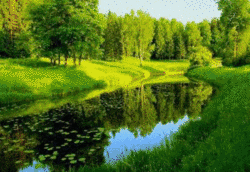
Figure 1 – Nature, ruined under the influence of anthropogenic activity of man
(animation: 5 frames, 7 reps, 140 KB)
According to previous studies [14] migration and localization of salts and toxic elements influenced by seasonally variable climatic factors. Therefore, the drilling and sampling of soils and aquifer waters was carried out in October 2012 (cold and wet period) and in July 2013 (hot dry season). Under field conditions were determined in the pH and Eh of the groundwater from wells and nearby surface sources. Measurements of indicators was carried out with portable instruments PH-602 and ORP-802 (Figure 2).
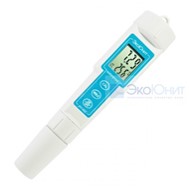
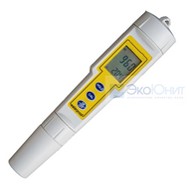
Figure 2 – Portable devices PH-602 and ORP-802
A visual study of borehole cores allowed us to determine the patterns of development of secondary anthropogenic mineralization in the zone of aeration and zone of saturation. In the form of impregnation, powders, stringers and embossments, inclusions and nodules are highlighted in brown and black iron oxides, the oxides of manganese, white soda minerals and sulfates of sodium, yellow aggregates, sulphur, black earthy sulphides and organic matter. Installed natural distribution of the mineralization in the geological environment of the city. Watersheds and slopes dominated by an oxidizing atmosphere and the salinity level of the groundwater represented by oxides and hydroxides, water-saturated soils are predominantly brown in color. In the lower parts of the slopes begins to emerge, in floodplains and gullies and rivers dominate reductive atmosphere, the soil color becomes gray, and greenish black color (Figure 3). The oxidizing atmosphere is replaced by restorative gleevac, and sometimes hydrogen sulfide. Changing the oxidizing conditions on the recovery gley and further to hydrogen sulfide significantly affect the change in the conditions of water migration [15] and determine the differentiation of anthropogenic substances in the geological environment.
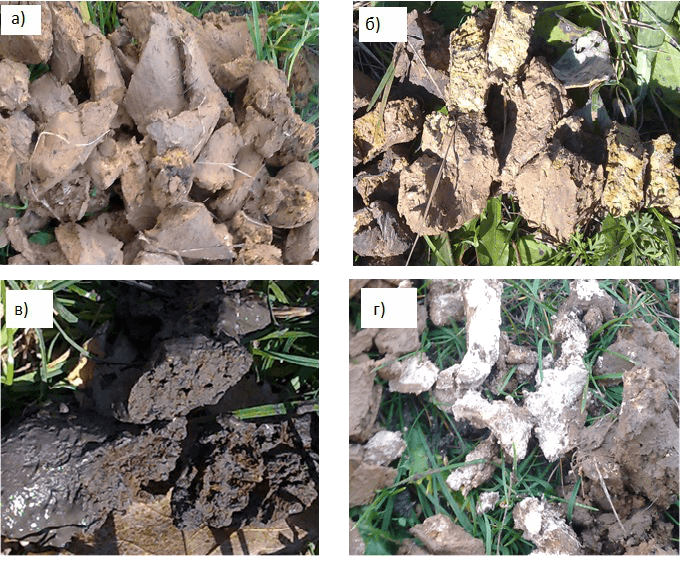
Figure 3 – A visual study of borehole cores
where a) yellow-brown plastic loamy soil loam with small inclusions of gypsum; b) yellow-brown loams with patches of light yellowish salt aggregates and rusty-brown iron hydroxides; c) black, dark gray silty clay loam with patches of light yellowish salt minerals and rusty-brown aggregates of iron hydroxides; d) large selection of white aggregates of gypsum in yellow-brown loam.
Visual observations are confirmed by the results of analyses of water extracts water-bearing soils. From the watershed to the plains of hills and rivers the increase in the degree of salinity. Thus hydrocarbonate-sulfate calcium salinity is replaced by sulfate, chloride-sulphate salinity with mixed cation composition.
Waste waters subsequent spread of contaminated water in accordance with the direction of groundwater flow to beams and further to R. Kalmius. In the process of interaction of polluted water from the aeration zone rocks is partially cleansing. Further contaminated meteoroids and man-made water fall in aquifers and move with groundwater flow. Promotion of polluted water through the water enclosing rocks is accompanied by complex physico-chemical processes that help to purify water from contaminants. Breeds thus represent a sort filters that block the spread of contamination, the material components of which are apparent in soils in the form of the newly formed man-made minerals.
In connection with the halo-substitution of soils is manifested hydrogeochemical zonation of groundwater manifested in the natural distribution of salts and trace elements. This zonation develops coordinated with the halo substitution soils. So the salinity of the groundwater increases from watersheds(1,5–2,0 g/dm3) the beams and floodplains of rivers (3,0–5,0 g/dm3), (Figure 4). Bicarbonate-sulphate calcium-sodium composition of the groundwater watershed is replaced by a chloride-sulphate and, in some places, sodium chloride composition of floodplains and beams. Installed technogenic zonation corresponds to direct natural metamorphisize groundwater [16]. It should be noted that pollution of groundwater, coinciding with the zones of intensive substitution of water-bearing soils, also timed to man-made objects, for example, to Polyakovsky dumps, waste rock dumps, coal mines, landfills and waste dumps. Very often the different waste collection and landfills are located in floodplains and beams. The position of these areas is compounded by the fact that along the floodplains are equipped with sewage networks, often in disrepair.
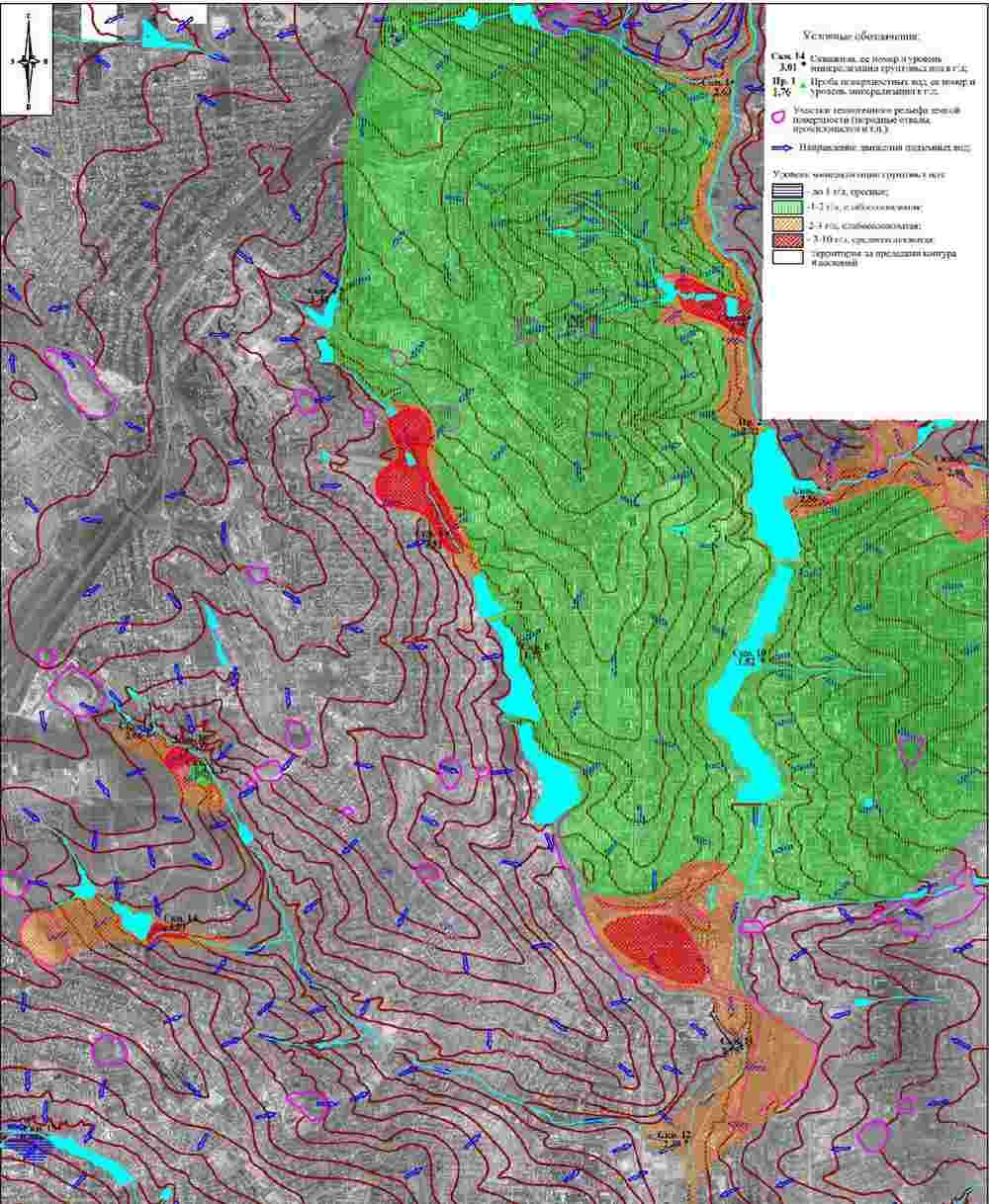
Figure 4 – Distribution map of groundwater
In October 2012 it was found intense local pollution of groundwater by nitrates (up to 23,63 mg/dm3, figure 5), which was confined to the floodplains of beams and the Kalmius river, especially near posted here rock, slag and sludge dumps and septic tanks. In addition, the number of samples observed nitrate (up to 7,08 mg/dm3) and ammonium (up to 10,95 mg/dm3) pollution. In General there was a high nitrogen contamination of groundwater.
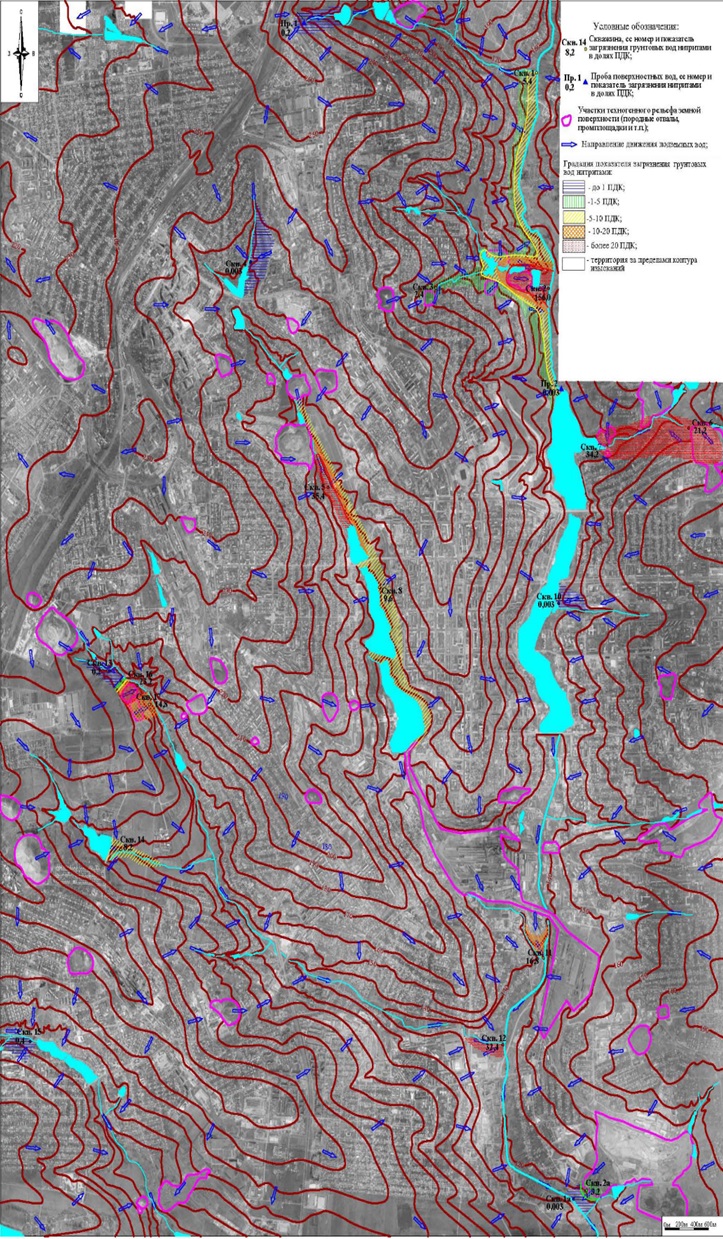
Figure 5 – Map of plumes of ground water contamination by nitrates
Sources of nitrogen pollution of groundwater could serve various waste accumulators are nitrogen compounds in high concentrations, for example, landfills and dumps of solid waste, emergency leaking sewage systems. An additional source of water pollution by nitrates are vegetable plots, undeveloped floodplains of gullies and rivers, which regularly are made of mineral and organic fertilizers. In the marshy parts of floodplains, as well as in muddy sediments a source of nitrogen compounds can be organic remains of plants. In terms of the recovery environment, which was established in the groundwater of the floodplain, in the cold period of the year when precipitation dominates over evaporation, the nitrate nitrogen is reduced to nitrite, then to ammonium. The groundwater of this period the pH and Eh are in the area of development of sulphate-reducing and denitrifying bacteria. Happens microbiological purification of groundwater from nitrogen compounds, when nitrates are free to atomic nitrogen. Sulfate sulfur is also recovered to free sulfur, which is manifested by discharge in the yellow soils salinity and sulfide sulfur. In the latter case, sulfides are formed a significant part of the trace elements, however, the main mineral is earthy black pyrite. At the hydrogen sulfide barrier is localized significant part of toxic elements – lead, mercury, cadmium, arsenic, molybdenum, zinc etc. However, in the process of dynamic development of the halos of substitution of hydrogen sulfide atmosphere is often replaced gleevac at which water migration data elements can be continued in the groundwater may move toxic broad-spectrum trace elements.
The results obtained allow to draw important conclusions:
- The most contaminated groundwater accumulative landscapes – river floodplains and beams where they are most often used by the public for watering garden plots, drinking and other needs.
- Need to compile a directory of sources of groundwater, nipped to the earth's surface in the form of springs, and organize their regular hydrogeochemical and microbiological control.
- In order to ensure the safety of the population it is necessary to organize regular monitoring of pollution of soil, groundwater accumulative landscapes and cultural vegetation grown in the floodplains of hills and rivers of urban populations.
References
- Временное методическое руководство по проведению комплексных эколого-геохимических исследований (на территории Украины). – ГГП
Геопрогноз
Киев, 1994 г. - ГСанПиН 2.2.4-171-10. Гигиенические требования к воде питьевой, предназначенной для потребления человеком. [Электронный ресурс]. – Режим доступа: http://omegaltd.com.ua/article/180.php. – К.: 2010 г.
- Инструкция по учету заселенных почв. Министерство мелиорации и водного хозяйства СССР. – М., 1968 г.
- Методические указания по оценке степени опасности загрязнения почвы химическими веществами. / Минздрав СССР. – М., 1987 г.
- Оценка изменения геологической среды под влиянием хозяйственной деятельности в Донецкой области. / Артемовская ГРЭ ГГП
Донбассгеология
. – Артемовск 1992 г. Фонды ГРГПДонецкгеология
. - Рекомендации по проведению гидрохимического опробования и физико-химических исследований для оценки загрязнения подземных вод. – ПНИИИС Госстроя СССР. – М., 1986 г.
- РК 41-00032626-00-314-98. Еколого-геохімічна оцінка забруднення грунтів, донних відкладів, ґрунтових вод. Методичні рекомендації. ДГП
Геоінформ
. - СанПиН № 4630-88. Санитарные правила и нормы охраны поверхностных вод от загрязнения.[Электронный ресурс]. – Режим доступа: http://document.ua/docs/tdoc2616.php. – Минздрав СССР. М.: 1988 г.
- Перельман А. И. Геохимия природных вод. – М.: Наука, 1982 г. – 154 с., ил. – (Серия
Человек и окружающая среда
). - Питьева К. Е. Гидрогеохимия. Учебное пособоие. – 2-е издание – М.: Издательство МГУ, 1988 г. – 316 с.
- Самарина В. С. Гидрогеохимия. Учебное пособие. – Издательство Ленинград, ун-та, 1977 г. – 360 с.
- Тютюнова Ф. И. Гидрогеохимия техногенеза. – М., Наука, 1987 г. – 335 с.
- Бочевер Ф. М. Защита подземных вод от загрязнения. / Лапшин Н. Н., Орадовская А. Е. – М., Недра, 1979 г. – 254 с.
- Выборов С. Г. Геохимические особенности динамики развития техногенных аномалий в почвах. Опыт мониторинга состояния почв Донбасса / Силин А. А., Россеева Ю. Ю., Ливадняя Я. Ю., Горбачева Е. Ю. // Наукові праці ДонНТУ. Серія
Гірничо-геологічна
, 2011 г. – C. 309–316. - Перельман А. И. Геохимия природных вод. – М.: Наука, 1982 г. – 154 с.
- Шварцев С. Л. Основы гидрогеологии. Гидрогеохимия. / Пиннекер Е. В., Перельман А. И. и др. – Новосибирск: Наука, 1982 г. – 287 с.
